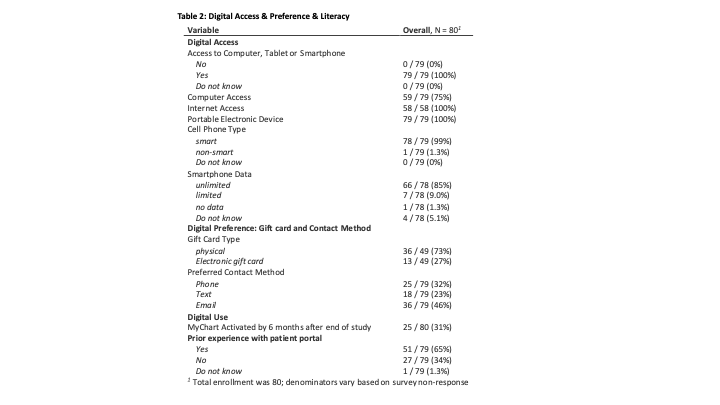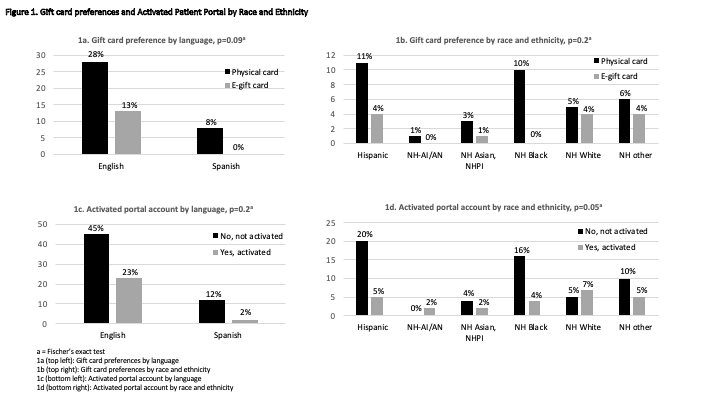Health Equity/Social Determinants of Health
Session: Health Equity/Social Determinants of Health 5
269 - Digital Divide: Differences between digital access, preference, and use among parents of pediatric research participants
Saturday, May 4, 2024
3:30 PM - 6:00 PM ET
Poster Number: 269
Publication Number: 269.1657
Publication Number: 269.1657

Lauren E. Smith, MD, MPH (she/her/hers)
Pediatric Emergency Medicine Fellow
Seattle Children's Hospital
Seattle, Washington, United States
Presenting Author(s)
Background: Healthcare delivery and research are moving increasingly towards digital engagement with patients, which could inequitably exclude some populations due to differential technology access and uptake. Recently concerns have arisen over the so called “digital divide,” which refers to differences in access and uptake of technology among different individuals in ways that create barriers to accessing services or resources. Populations that have been found to have less access to technology include individuals from minoritized racial and ethnic groups, persons with disabilities, those with lower socio-economic status, and rural populations.
Objective: We sought to evaluate study-related digital access, preferences, and use among parents of patients with Medicaid insurance enrolled in research in a pediatric emergency department (ED).
Design/Methods: We conducted a secondary analysis within a randomized trial at an academic pediatric ED. Children with public insurance and a language of English or Spanish who were treated for asthma symptoms were enrolled; parents completed surveys regarding digital access, preferences and demographics. Associations were tested using Fisher’s exact test.
Results: We enrolled 80 families, of whom 18% had a language for care of Spanish; 31% of children identified as Hispanic, and 25% as Black (Table 1). All baseline survey respondents (n=79) endorsed having an internet-connected computer (73%) or smartphone (99%); 85% of smartphone holders reported unlimited data. When given the choice, 73% of participants requested a physical gift card instead of an electronic gift card. Only 31% had patient portal access 6 months after study end (Table 2). Parents who spoke Spanish or with a child identified as Hispanic or Black more often requested physical gift cards and less often had patient portal access, but these differences were not statistically significant (Figure 1).
Conclusion(s): Despite ubiquitous access to internet-connected digital devices among this Medicaid-insured population, patient portal use was low and many families preferred non-digital reimbursement. Efforts to enhance research inclusion should consider digital preferences in addition to digital access when planning study procedures.
.png)


